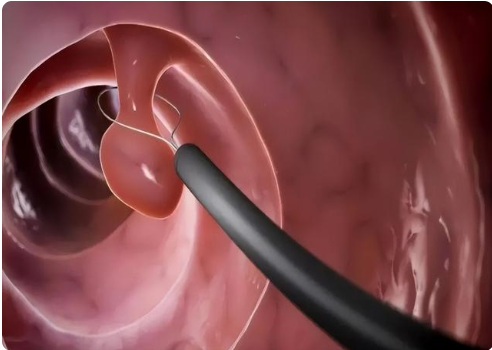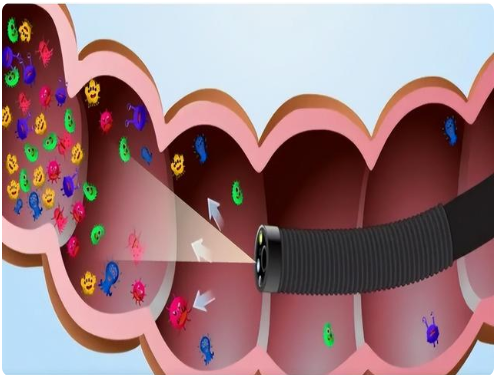As people continue to pay attention to health, regular physical examinations have become something that many people do every year. However, many people ignore the intestinal examination, in fact, intestinal health is very important to the human body. The intestine is called the second brain of the human body and the largest immune organ in the human body, and colonoscopy is currently the gold standard for diagnosing intestinal diseases.
 If a patient develops a disease during the daily diagnosis and treatment process, the doctor prescribes the right medicine and often needs to check the specific location of the disease and the severity of the disease through physical examination. Colonoscopy is a common method for diagnosing and treating bowel disease, but it is relatively new to most people. In fact, there are many hidden diseases of the intestines that are diagnosed by colonoscopy. Although the process of colonoscopy is very hard, but a colonoscopy can be managed for a long time!
If a patient develops a disease during the daily diagnosis and treatment process, the doctor prescribes the right medicine and often needs to check the specific location of the disease and the severity of the disease through physical examination. Colonoscopy is a common method for diagnosing and treating bowel disease, but it is relatively new to most people. In fact, there are many hidden diseases of the intestines that are diagnosed by colonoscopy. Although the process of colonoscopy is very hard, but a colonoscopy can be managed for a long time!
The importance of colonoscopy
The health of the gastrointestinal tract is related to the health of the whole body, especially those who often eat irregularly should pay more attention. When it comes to the "gastrointestinal system", the gut is actually a very important abdominal organ that plays an important role in detoxification and nutrition. People always think of the stomach first, neglecting intestinal diseases can occur at any age, unhealthy eating habits can also damage the intestines, and the consequences are often more serious!
 Colonoscopy is the most effective way to confirm the health of the gastrointestinal tract, and colonoscopy is a common member of the fiberoptic endoscopy family. It retrogrades from the anus and can examine the sigmoid colon, rectum, transverse colon, descending colon, cecum and ascending colon, as well as a small section of the small intestine connected to the large intestine. The full name is colonoscopy.
Colonoscopy is the most effective way to confirm the health of the gastrointestinal tract, and colonoscopy is a common member of the fiberoptic endoscopy family. It retrogrades from the anus and can examine the sigmoid colon, rectum, transverse colon, descending colon, cecum and ascending colon, as well as a small section of the small intestine connected to the large intestine. The full name is colonoscopy.
This method of examination not only causes little damage to the body, but is also very accurate and effective. During the gastrointestinal examination, it is possible to find out whether the patient has diseases such as ulcerative colitis, chronic enteritis, tumors or polyps, and to confirm the growth location of the tumor and the specific location of the gastric ulcer disease.

Colonoscopy is the most important method for early detection of colorectal cancer. Colonoscopy can detect not only intestinal lesions, but also intestinal tumors smaller than 1 cm, including size, shape, and location.
It can also clip small pieces of diseased tissue for pathological examination, which is helpful to guide treatment. This makes a great contribution to the clear diagnosis and judgment of the severity of the disease, and some intestinal lesions such as intestinal polyps are found, which can be directly removed by colonoscopy.
Colonoscopy has great benefits for both men and women. For women over 45 years old and men over 40 years old who are highly stressed, often have poor rest, often worry, insomnia, anxiety, and bowel dysfunction leading to irritable bowel syndrome. A complete colonoscopy can be used to determine whether there is gastrointestinal dysfunction caused by intestinal inflammatory stimulation, and whether there is intestinal spasm.
Colonoscopy as a physical examination, the main difference is whether the operation is performed consciously, and it is also important for the detection of early lesions. It is divided into ordinary colonoscopy and painless colonoscopy. Ordinary colonoscopy is performed when the patient is awake, and comfort colonoscopy can reduce the pain of the patient, so the painless colonoscopy is performed under anesthesia.
Symptoms such as intestinal bleeding and abdominal pain caused by intestinal polyps have seriously affected the patient's health problems, life and work. What is even more frightening is that some intestinal polyps may also become cancerous. Generally, gastrointestinal bleeding is not obvious, which can be manifested as intermittent yellow water. Larger intestinal polyps may also lead to intestinal obstruction and nutrient absorption disorders. Severe gastrointestinal bleeding can be manifested as bloody stools. Therefore, because intestinal diseases are complex and changeable, the relevant treatment should be carried out according to the conditions of the disease.
If it is adenomatous polyps, the number is also less than 10, and the diameter of the polyps is less than 1cm, and most of them have no obvious harm. However, if the adenomatous polyp is relatively large, there is a possibility of malignant transformation, and the diameter exceeds 2cm. It is recommended to remove it as soon as possible, and it is recommended to remove it under the endoscope to avoid polyp enlargement or malignant transformation. Polyposis polyps are mostly malignant hereditary diseases. When there are more than 100 polyps, early treatment is recommended.
Through colonoscopy, you can more intuitively understand whether there is a disease in the intestine. If it is judged purely based on the doctor's experience, it may delay the treatment time and lead to aggravation of the condition. Depending on the law of disease progression, the risk of developing cancer increases after five and ten years with polyps in the gut. At this time, colonoscopy can play an effective preventive role and "stifle the disease in the cradle."
Second, do colonoscopy should pay attention to what
Before colonoscopy, the choice of laxatives should be determined according to each individual's situation, and we must pay attention to clearing the bowels and defecation. Oral laxatives can be taken the night before the exam. Your doctor will choose different medications, and take the laxative 8-10 hours before the exam to promote emptying. It can be taken according to the doctor's recommendation. Generally, doctors will use mannitol, sodium phosphate, etc., and start defecation 1 to 2 hours after taking it, and bowel preparation is not completed until the stool is watery.
Be sure to empty the bowel before the test. It is generally recommended not to eat crude fiber foods for three days before the test, and fasting in the morning and noon on the test day until the bowel is clear by watery stools. In addition, cardiopulmonary function tests are required, and colonoscopy cannot be performed in the case of severe cardiopulmonary dysfunction. If you have a painless colonoscopy, you must stop drinking water within 4 to 6 hours before the examination, avoid excessive worry and anxiety, maintain emotional stability, and preferably accompanied by family members.
It is recommended to take slag-free, liquid food the day before the examination, mainly soft and digestible food, and avoid eating leek, celery, fungus and other foods that are too irritating and crude fiber. Before colonoscopy, drink a small amount of honey water or sugar water to be alert to the occurrence of hypoglycemia caused by fasting. In addition, patients should also pay attention to avoid eating foods containing seeds such as figs, tomatoes, cucumbers, eggplants, dragon fruits, and kiwi.
The colonoscope is a flexible, slender, medical instrument with a camera. During the entire colonoscopy, the endoscope enters the anus, the sigmoid colon, along the rectum, the descending colon, through the transverse colon, into the ascending colon, and finally reaches the The "ileocecal", which allows doctors to see inside the large intestine and colon.
Colonoscopy is a non-invasive test, but some contraindications must be mastered. For children who cannot cooperate, it needs to be performed under anesthesia. Antispasmodics or sedatives may be required for subjects with excessive nervousness or high spasticity. During the examination, the patient will feel abdominal distension, which is due to the need to inflate to observe the intestinal mucosa, because pulling the colon will also cause different degrees of pain, and there will be a strong sense of abdominal distension.
The general process is that the doctor inserts a thin tube with a camera lens from the anus into the intestine and pushes it continuously. During the examination, lie on your side on the examination table, put on the crotch pants specially designed for colonoscopy, relax and prepare for the examination. In addition, a painless colonoscopy requires intravenous anesthesia, so a person needs to be accompanied throughout.
Colonoscopy for women during menstruation and pregnancy may cause gynecological infections. The constitution of menstruation and pregnancy is relatively weak, so colonoscopy should not be performed during menstruation. Women are not suitable for colonoscopy during menstruation and pregnancy. Colonoscopy will increase the risk of infection. Women's gynecological diseases may be caused during menstruation.
Colonoscopy is not recommended for patients with ileus, as the bowel receives too much pressure to remove debris after taking laxatives. However, patients with intestinal obstruction themselves have intestinal blockage, which is likely to cause intestinal perforation, which is very dangerous. If bowel obstruction recurs and the cause of the obstruction can only be determined by colonoscopy, this is a time to weigh the pros and cons and assess the benefits and risks.
For so many years, due to the influence of genes, bowel cancer has obviously shown a phenomenon of family aggregation. People with a family history of bowel cancer are themselves a type of bowel cancer. This is related to congenital genetic genes, especially people over 50 years old. Colonoscopy every 5-10 years. People with a family history of polyps or bowel cancer are at high risk for colorectal cancer and need regular cancer screening.
Painless colonoscopy patients who are allergic to anesthesia cannot undergo painless colonoscopy. After colonoscopy, they should rest for two days and remember not to do strenuous exercise for 3 days. Colonoscopy is also an invasive empirical examination. If there is severe abdominal pain in the back, it may lead to the occurrence of complications. You should go to the hospital immediately, and post-operative examination should be carried out.
